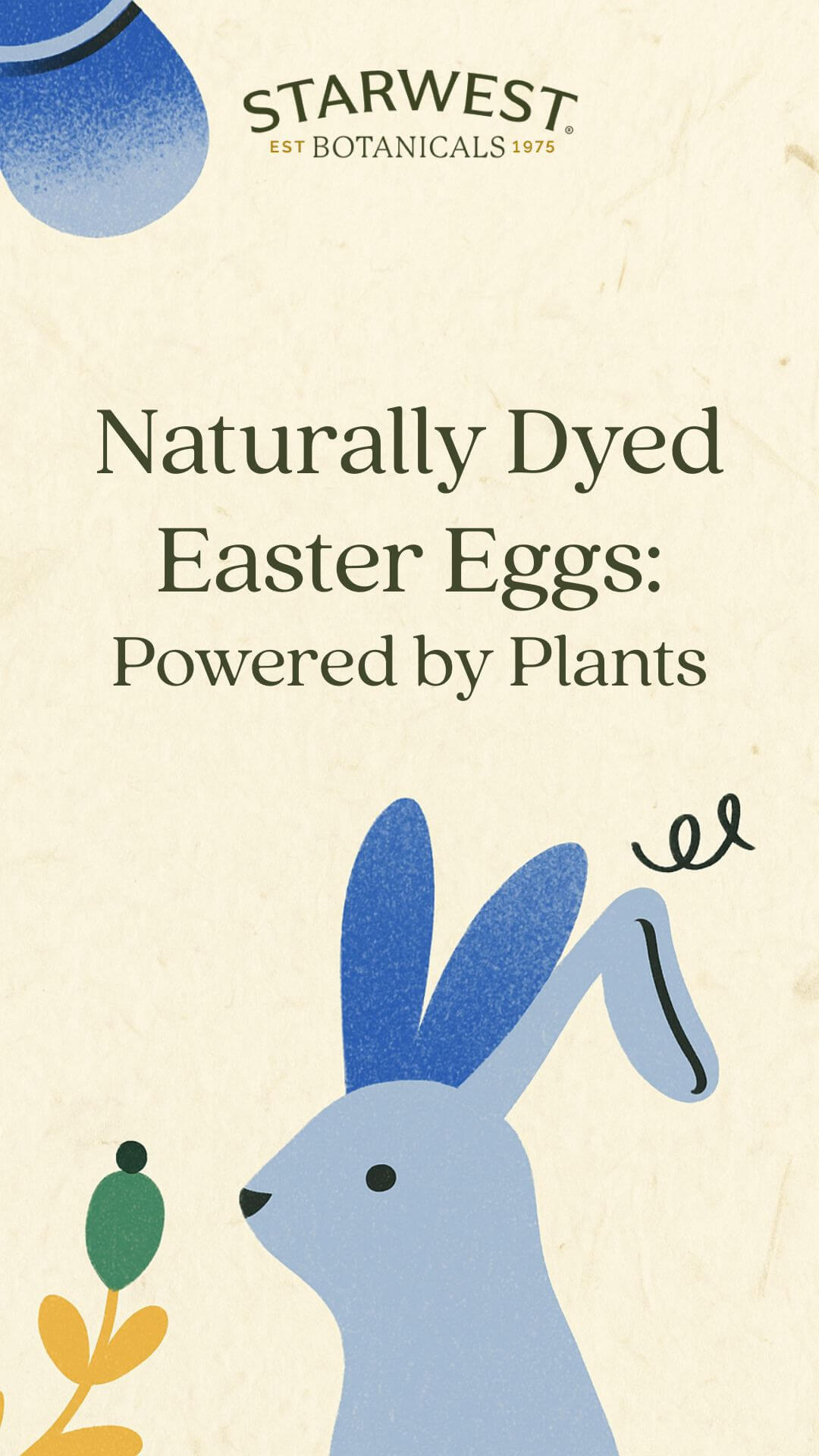Naturally Dyed Easter Eggs: Powered by Plants, Not Chemicals
Posted by Starwest Botanicals on 04-17-2025

Because childhood magic deserves nature-made color.
There’s something timeless about dyeing Easter eggs. The colors, the giggles, the messy fingers; it’s one of those simple joys that sticks with you. And when little ones are involved, it matters even more what you’re using.
This year, we’re trading synthetic dyes for something a whole lot gentler (and way more magical): herbs, teas, and botanicals from the Starwest pantry.
Real Color, Straight from Nature
Let’s be honest, kids touch everything. So, when they’re dunking, swirling, and decorating eggs, wouldn’t it feel better knowing what’s on their hands came from turmeric or hibiscus instead of something you can’t even pronounce?
That’s why we love using plant-based dyes. They’re not just beautiful, they’re safe, simple, and come with a whole lot of natural charm. No artificial anything. Just color the way nature intended.
Here’s how some of our favorite botanicals performed in the egg dye test:
- Turmeric Root Powder – Delivered a soft, sunny yellow. Like a smile in color form.
- Spirulina Powder – Hoped for green, got a gentle pastel shade of spring. Subtle and sweet.
- Hibiscus Flowers – Gave us a moody, marbled purple instead of pink — pure Easter egg galaxy vibes.
- Beet Root Powder – A soft blush tone that looks like something out of an artisan market.
Every egg turned out a little different, which made it even more exciting for the kids (and the grownups, too).
The Starwest Guide to Natural Egg Dyeing
Ready to bring a little botanical magic to your Easter table? Here's how to make it happen:
- Start with the Basics: Mix warm water with a splash of organic vinegar. It helps the dye stick and sets the stage for color brilliance.
- Add Your Botanicals: Stir in the herbs, powders, or teas of your choice. The stronger the brew, the deeper the hue.
- Egg Time: Carefully place your hard-boiled eggs into the dye. This is where the fun (and tiny hands) get involved!
- Let It Soak: Pop the bowls in the fridge and let the eggs soak for up to 24 hours. It’s a great overnight project that builds anticipation.
- The Big Reveal: Remove the eggs, pat them dry, and admire the natural magic. No two eggs are alike, and that’s what makes it special.
A Teaching Moment Wrapped in Fun
Going natural isn’t just a safer choice, it’s a beautiful way to show kids how powerful plants can be. They’ll get to see turmeric turn eggs golden, hibiscus swirling into purple, and matcha dusting shells with soft green hues. It’s hands-on learning, sensory play, and creativity all in one.
Plus, there’s something so sweet about connecting traditions with the earth. It’s a gentle reminder that nature always shows up with color, beauty, and joy.
Other Plant-Based Dye Favorites to Try
Want to experiment beyond the basics? Here are a few more Starwest favorites that double as dye magic:
- Elderberries – Deep, stormy purples
- Assam B.O.P. Tea – Cozy, toasty browns
- Chili Powder – Warm terracotta shades
- Matcha Tea Powder – Soft, earthy green (and smells amazing)
Your Naturally Dyed Easter Moment Awaits
So, gather the little ones, break out the botanicals, and let nature do her thing. Whether your eggs come out bright, pastel, or somewhere in between, you can feel good knowing every color came straight from the earth with love, care, and zero artificial extras.
Tag us in your creations and let us know which color was your family’s favorite!
P.S. Want to try this at home? All the plant-based dye ingredients we used are linked right here in the blog, so you can grab them straight from Starwest and start creating!


